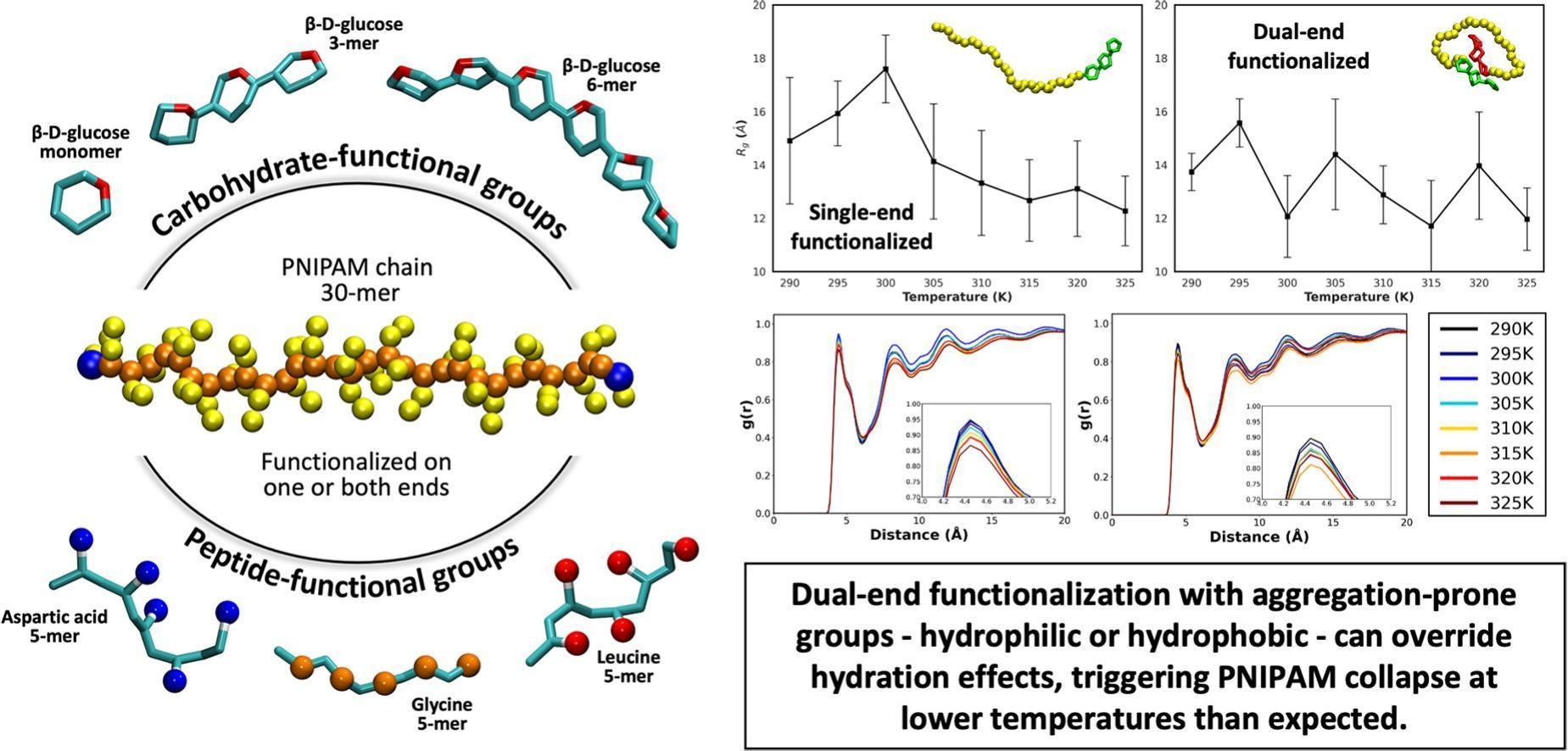Aggregation of functional groups leads to unexpected lowering of PNIPAM LCST
Authors:
Soumil Y. Joshi and Sanket A. Deshmukh
Affiliation:
Department of Chemical Engineering, Virginia Tech, Blacksburg, VA 24061, USA

Description:
Controlling the coil-to-globule transition of thermoresponsive polymers like poly(N-isopropylacrylamide) (PNIPAM), which exhibit a lower critical solution temperature (LCST) is vital for developing stimuli-responsive materials. In this study, we use coarse-grained molecular dynamics (CG MD) simulations to investigate how single-end and dual-end terminal functionalization of PNIPAM 30-mers with carbohydrates and amino-acids with varying hydrophilicity and hydrophobicity affects their coil-to-globule transition. Surprisingly, while hydrophilic groups are generally expected to increase LCST, our results show that in PNIPAM chains with dual-end terminal functionalization, the tendency of certain hydrophilic groups to self-aggregate can reduce the LCST compared to that of pure PNIPAM (∼305 K). In contrast, systems with non-aggregating functional groups or only single-end functionalization exhibit more conventional LCST behavior. These findings highlight the complex, competing roles of dehydration and functional group aggregation in governing PNIPAM’s thermoresponsive transitions and provide insight into the rational design of functionalized soft materials.
Publications:
- Joshi, S.Y. and Deshmukh, S.A.; Aggregation of functional groups leads to unexpected lowering of PNIPAM LCST; Computational Materials Science, 2025
Tags:
Amino acids Atomistic simulation Carbohydrates Peptides and proteins PolymersFiles:
| File Name | File Description | File Type | File Size | File URL |
|---|---|---|---|---|
| MD Simulations Input and Analysis Codes | Python scripts for analysis of MD simulations trajectories. | zip | 35.93 KB | Login to download |